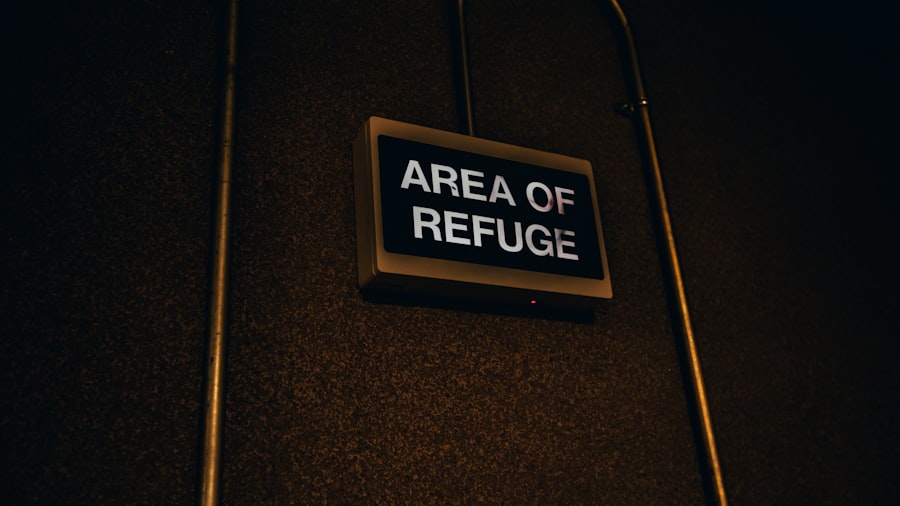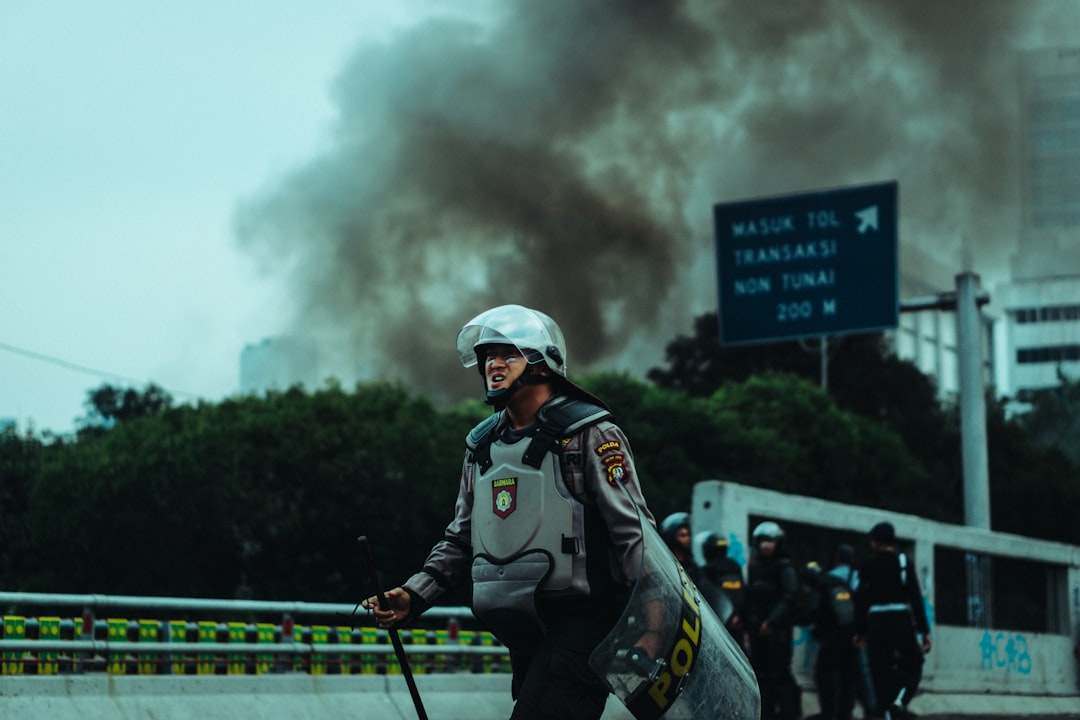When it comes to ensuring the safety and well-being of your family during unexpected situations, creating a family emergency plan is paramount. This plan serves as a roadmap for how your family will respond to various emergencies, whether they are natural disasters, medical crises, or other unforeseen events. Start by gathering your family members to discuss potential emergencies that could affect your area, such as hurricanes, earthquakes, or fires.
Encourage everyone to share their thoughts and concerns, as this will help you identify the most relevant scenarios to prepare for. Once you have identified potential emergencies, outline specific actions that each family member should take. Designate a meeting place where everyone can gather if you are separated during an emergency.
This could be a neighbor’s house, a local park, or any safe location that everyone can easily remember. Additionally, establish communication methods, such as text messaging or social media, to keep in touch if phone lines are down. By involving everyone in the planning process, you not only empower them but also foster a sense of unity and preparedness within your family.
Key Takeaways
- Create a family emergency plan to ensure everyone knows what to do in case of an emergency
- Assemble an emergency kit with essential items such as water, food, and first aid supplies
- Secure your home by reinforcing doors and windows, and securing heavy furniture
- Stay informed by signing up for emergency alerts and monitoring local news and weather updates
- Safeguard important documents by keeping them in a waterproof and fireproof container
- Establish emergency contacts and share your plan with family members, neighbors, and friends
- Know your home’s utilities and how to safely shut them off in case of an emergency
- Learn basic first aid techniques to provide immediate care in case of injuries
- Protect your pets by including them in your emergency plan and having supplies for them in your emergency kit
- Prepare for evacuation by knowing evacuation routes and having a plan for transportation and shelter
- Maintain emergency supplies by regularly checking and restocking them to ensure they are up to date and functional
Assembling an Emergency Kit
An essential component of your family emergency plan is assembling an emergency kit. This kit should contain all the necessary supplies to sustain your family for at least 72 hours in the event of a disaster. Start by gathering non-perishable food items, such as canned goods, granola bars, and dried fruits.
Don’t forget to include a manual can opener, as well as water—at least one gallon per person per day is recommended. Consider dietary restrictions and preferences when selecting food items to ensure that everyone has something they can eat. In addition to food and water, your emergency kit should include first aid supplies, flashlights with extra batteries, and a battery-powered or hand-crank radio.
These items will help you stay informed and safe during an emergency. Personal hygiene products, such as hand sanitizer and wet wipes, are also important for maintaining cleanliness in challenging situations. Finally, make sure to regularly check and update your emergency kit to replace expired items and adjust for any changes in your family’s needs.
Securing Your Home

Securing your home is a critical step in preparing for emergencies. Start by assessing your property for vulnerabilities that could be exploited during a disaster. Check windows and doors to ensure they are sturdy and can be locked securely.
Reinforce entry points with deadbolts or security bars if necessary. Additionally, consider installing smoke detectors and carbon monoxide detectors throughout your home to alert you to potential dangers. Beyond physical security measures, it’s also wise to create a safety plan for your home.
Make sure everyone knows how to access these safe zones quickly. Furthermore, familiarize yourself with the location of fire extinguishers and ensure they are easily accessible.
By taking these precautions, you can significantly reduce the risks associated with emergencies.
Staying Informed
| Source | Frequency | Accuracy |
|---|---|---|
| News Websites | Daily | High |
| Social Media | Hourly | Varies |
| Podcasts | Weekly | Medium |
In times of crisis, staying informed is crucial for making sound decisions. Equip yourself with reliable sources of information regarding local emergencies and weather updates. Sign up for alerts from local authorities or download apps that provide real-time notifications about severe weather or other emergencies in your area.
This proactive approach will help you stay ahead of potential threats and allow you to act swiftly when necessary. Moreover, consider establishing a routine for checking news updates during emergencies. Designate specific times each day to gather information from trusted news outlets or official government websites.
This will help you avoid misinformation that can spread rapidly during crises. Encourage your family members to do the same so that everyone remains informed and prepared to respond appropriately.
Safeguarding Important Documents
In the chaos of an emergency, safeguarding important documents can be easily overlooked but is essential for recovery afterward. Start by gathering critical documents such as birth certificates, passports, insurance policies, and medical records. Make copies of these documents and store them in a waterproof container within your emergency kit.
Additionally, consider digitizing important papers by scanning them and saving them on a secure cloud service or external hard drive. It’s also wise to create a list of essential contacts and account numbers related to your financial institutions and insurance providers.
By taking these steps to protect your vital information, you will be better equipped to navigate the aftermath of an emergency.
Establishing Emergency Contacts

Establishing a network of emergency contacts is another vital aspect of your family’s preparedness plan. Start by identifying key individuals who can provide assistance during an emergency, such as neighbors, friends, or relatives living nearby. Make sure everyone in your family knows how to reach these contacts and has their phone numbers saved in their devices.
In addition to local contacts, consider designating an out-of-town contact who can serve as a central point of communication for your family members if local lines become congested or unavailable. This person can help relay messages and coordinate efforts if you become separated during an emergency. Ensure that all family members are aware of this contact’s information and encourage them to check in regularly.
Knowing Your Home’s Utilities
Understanding how to manage your home’s utilities is crucial during emergencies. Familiarize yourself with the location of gas shut-off valves, water main shut-offs, and electrical panels in your home. In the event of a gas leak or flooding, knowing how to quickly turn off these utilities can prevent further damage or danger.
Additionally, educate yourself on how to safely operate generators if you have one available for use during power outages. Make sure everyone in your household knows how to use these utilities safely and responsibly. By being knowledgeable about your home’s systems, you can take swift action when necessary and minimize risks during emergencies.
Learning Basic First Aid
Having basic first aid knowledge can be invaluable during emergencies when professional help may not be immediately available. Consider enrolling in a first aid and CPR course through organizations like the Red Cross or local community centers. These courses will equip you with essential skills for handling common injuries and medical emergencies.
In addition to formal training, keep a well-stocked first aid kit at home and in your emergency supplies. Familiarize yourself with the contents of the kit and learn how to use each item effectively. Regularly review first aid techniques with your family so that everyone feels confident in their ability to respond appropriately in case of an injury or medical crisis.
Protecting Your Pets
Your pets are part of your family, so it’s essential to include them in your emergency preparedness plans. Start by ensuring that they have proper identification, such as collars with tags that include your contact information and microchips if possible. This will increase the chances of being reunited with them if you become separated during an emergency.
Create an emergency kit specifically for your pets that includes food, water, medications, leashes, and any comfort items they may need during stressful situations. Additionally, identify pet-friendly shelters or hotels in advance so that you know where to go if evacuation becomes necessary. By taking these steps to protect your pets, you ensure their safety while also reducing stress for yourself during emergencies.
Preparing for Evacuation
Evacuation may become necessary during certain emergencies, so it’s crucial to have a plan in place for this scenario as well. Familiarize yourself with local evacuation routes and have multiple options mapped out in case one route becomes impassable due to debris or flooding. Share this information with all family members so that everyone knows where to go if evacuation is required.
Pack an evacuation bag for each family member that includes essential items such as clothing, toiletries, medications, and any important documents you may need. Make sure these bags are easily accessible so that you can grab them quickly when it’s time to leave. Practice evacuation drills with your family so that everyone knows what to do when the time comes—this preparation can make all the difference in ensuring a smooth evacuation process.
Maintaining Emergency Supplies
Finally, maintaining your emergency supplies is crucial for ensuring they remain effective when needed most. Regularly check expiration dates on food items and medications in your emergency kit and replace them as necessary. Create a schedule for reviewing your supplies every six months or at least once a year to ensure everything is up-to-date.
Additionally, consider involving your family in this maintenance process; it can serve as a valuable reminder of the importance of preparedness while also reinforcing the skills you’ve all learned together. By keeping your emergency supplies organized and current, you’ll be ready to face any situation that may arise with confidence and assurance. In conclusion, preparing for emergencies requires thoughtful planning and proactive measures across various aspects of life—from creating a family emergency plan to maintaining supplies over time.
By taking these steps seriously and involving every member of your household in the process, you not only enhance safety but also foster resilience within your family unit during challenging times.
Preparing your home for a national emergency is a crucial step in ensuring the safety and well-being of your family. It involves creating a comprehensive plan that includes stocking up on essential supplies, securing important documents, and establishing a communication strategy. For more detailed guidance on how to effectively prepare your home, you can refer to a related article on this topic. Check out this informative article that provides valuable insights and practical tips to help you get started. By taking these proactive measures, you can enhance your readiness and resilience in the face of unexpected events.
WATCH THIS! The 8 Assets You OWN But the Government CONTROLS (Dollar Collapse Survival)
FAQs
What is a national emergency?
A national emergency is a situation in which a government believes that the country is in a state of crisis and requires immediate action to protect the safety and well-being of its citizens.
Why is it important to prepare your home for a national emergency?
Preparing your home for a national emergency is important because it can help you and your family stay safe and secure during a crisis. It can also help reduce the impact of the emergency on your daily life and make it easier to recover afterwards.
What are some steps to prepare your home for a national emergency?
Some steps to prepare your home for a national emergency include creating an emergency kit with essential supplies, making a family emergency plan, securing your home against potential hazards, and staying informed about potential threats.
What should be included in an emergency kit for your home?
An emergency kit for your home should include items such as non-perishable food, water, a first aid kit, flashlights, batteries, a battery-powered or hand-crank radio, personal hygiene items, and important documents.
How can you secure your home against potential hazards during a national emergency?
Securing your home against potential hazards during a national emergency can involve actions such as reinforcing doors and windows, securing heavy furniture and appliances, and installing smoke alarms and carbon monoxide detectors.
Where can I find more information on preparing my home for a national emergency?
You can find more information on preparing your home for a national emergency from government agencies such as FEMA (Federal Emergency Management Agency) and the Red Cross. These organizations provide resources and guidelines for emergency preparedness.
